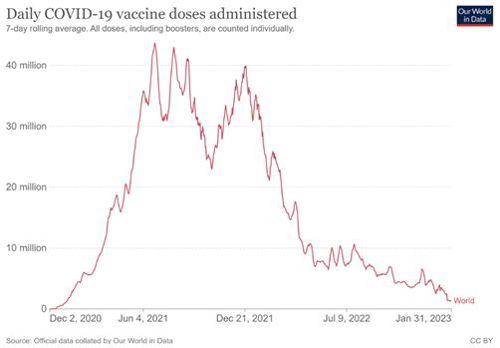Waiving from IP Rights in the Post-Covid Landscape
As the effects of the pandemic fade, it may be a good time to look into the lessons learned and take the necessary precautions against the next one. Indeed, pandemics have been a fundamental part of human history since time immemorial and diligently addressing the reasons for their emergence and the problems they create is quite important. However, the problem of inequitable access to drugs and vaccines faced during the pandemic remains unsolved today, with discussions of the matter expected to continue in 2023.
The pandemic instigated many discussions related to intellectual property (“IP”) rights form its outset. Compulsory licensing was the first solution depended on by the governments as it was thought that existing patent rights were the only obstacle to reaching a cure against Covid-19. Innovators and researchers were expected to develop an innovative cure in the shadow of the compulsory licensing threat. Meanwhile, many innovative pharmaceutical companies opened their patented technologies, IP rights and know-how to the public, sharing what they have for humanity’s sake.
Eventually, BioNTech came up with the first Covid-19 vaccine, initiating another problem, which is yet to be solved: vaccine inequity. Intellectual property rights came back into focus during the discussions of reasons for vaccine inequity, and this time, waiver of these rights was discussed as a solution.
However, just as compulsory licensing was not the solution for developing a cure for Covid-19, waiving intellectual property rights was far from a solution for equitable vaccine access. India and South Africa brought in October 2020 via the World Trade Organisation (“WTO”) a proposal to temporarily waive intellectual property protection for coronavirus vaccines. However, the proposal did not explain how the elimination of intellectual property rights disclosing the treatment of Covid-19 would suddenly enable states to produce vaccines and vaccinate their populations considering potential problems regarding manufacturing capacity, know-how, possession of suitable manufacturing sites, provision of adequate raw materials, informing and persuading people of the benefits of vaccination.
While these discussions preceded, countries in need were neither questioned as to why they did not utilise “granting compulsory licensing” provisions in their domestic laws, nor were they asked to justify claimed suitability of suspension of IP rights. In particular, India, as a co-leader for the IP Waiver proposal, had a special provision under Section 66 of its Patents Act, entitling the Central Government to revoke a patent in the public interest, which means that it had a direct legal tool to suspend all patents allegedly hindering its access to vaccines by a single act of government.
On June 17, 2022, two years after discussions began, during the 12th Ministerial Conference of the WTO, a ministerial decision was issued on the flexibilities brought with TRIPS regarding Covid-19 vaccines by authorizing members of developing country status to use patented inventions necessary for Covid-19 vaccine production and supply, without the right holder’s consent. However, the issue of vaccine access has still not been resolved 7 months later in February 2023. Indeed, according to “Our World In Data”, 69.4% of the world population received at least one dose of the Covid-19 vaccine. However, only 26.4% of people in low-income countries had received at least one dose as of January 26, 2023.

One of the fundamental reasons that compulsory licensing mechanisms or IP waivers did not foster vaccine access is the limited information provided in the patent documents, especially in vaccine-related inventions. The patent document does not have to or need to disclose, for example, how to access the raw materials, without which it may not be possible to put a vaccine together. It is important to remember that compulsory licenses or IP waivers do not and cannot create legal mechanisms forcing patent owners to transfer their know-how or trade secrets. This emphasizes the importance of multilateral solutions and finding ways to persuade the patent owners to collaborate.
Additionally, compulsory licenses or IP waivers cannot provide or create manufacturing facilities, equipment and raw materials in vaccine manufacturing. If those are absent, then even the patent owner is hopeless. We should keep in mind that the vaccines that softened the blow of the pandemic were found thanks to research and development conducted for years before the pandemic with the aim of treating cancer. Without the existing body of research, tests or data, it would have been impossible to conceive and develop a vaccine within one year.
Therefore, if we want to be prepared against a possible new pandemic and extend the access to the vaccine, we need to encourage research and development and innovative activities today. Our most powerful tool is adequate intellectual property protection, which isn’t meaninglessly threatened in every possible crisis. In addition to genuinely supporting R&D, we must find creative and efficient ways to incentivize the transfer of technology and know-how when needed, and we must think about the structures in which innovators/IP holders will be willing to cooperate and establish them starting today. This is the only proper solution if the sincere aim is preparing for another pandemic.

